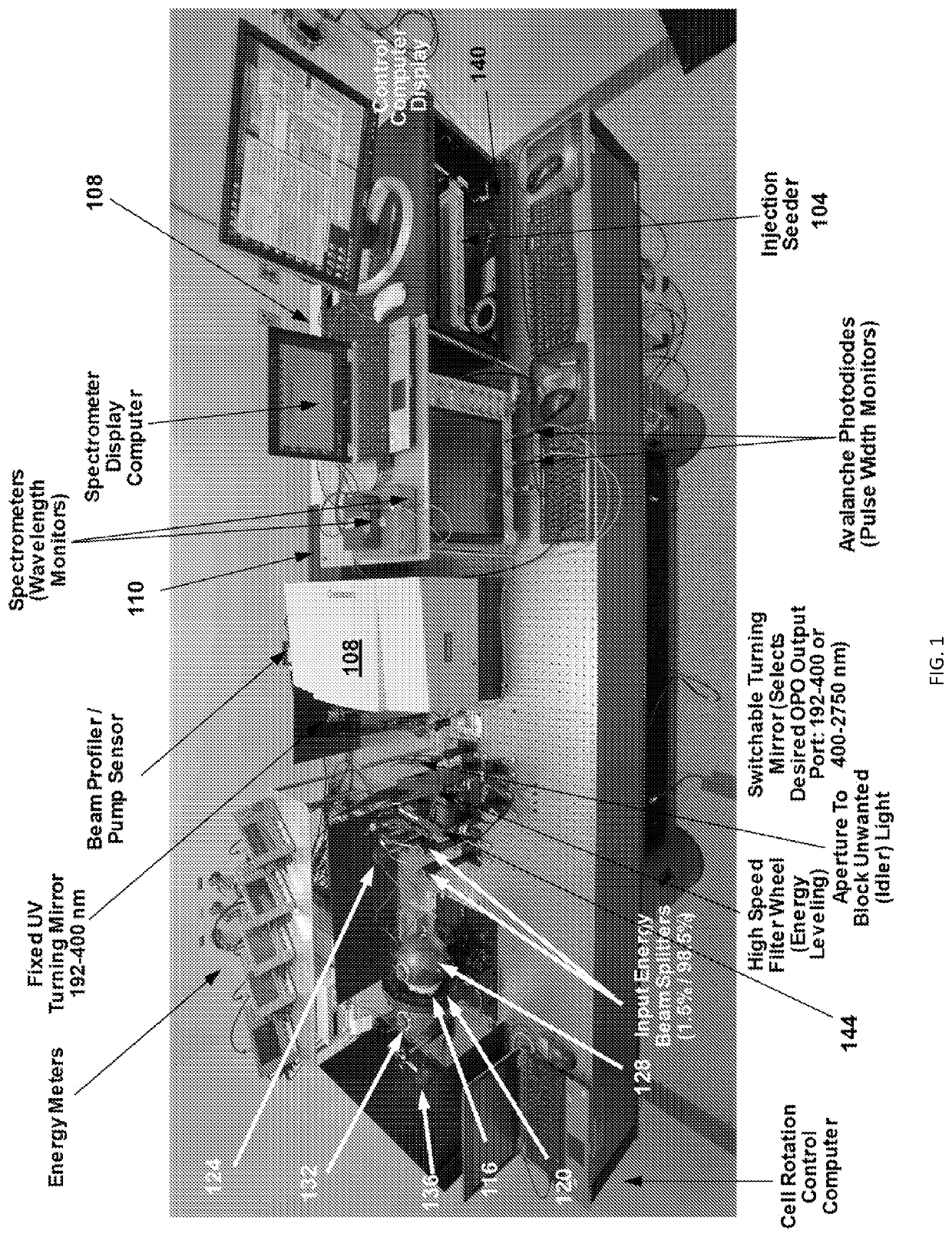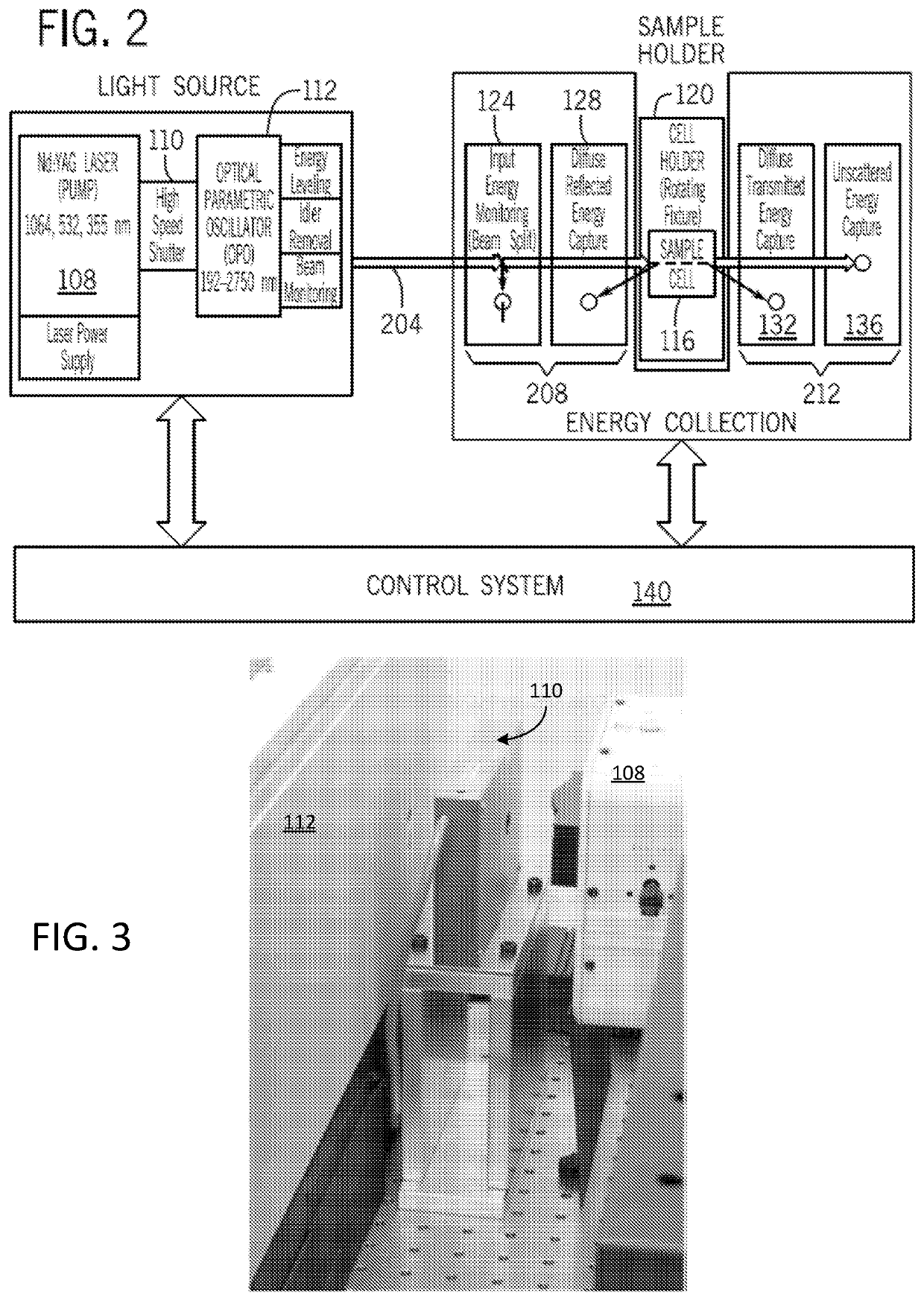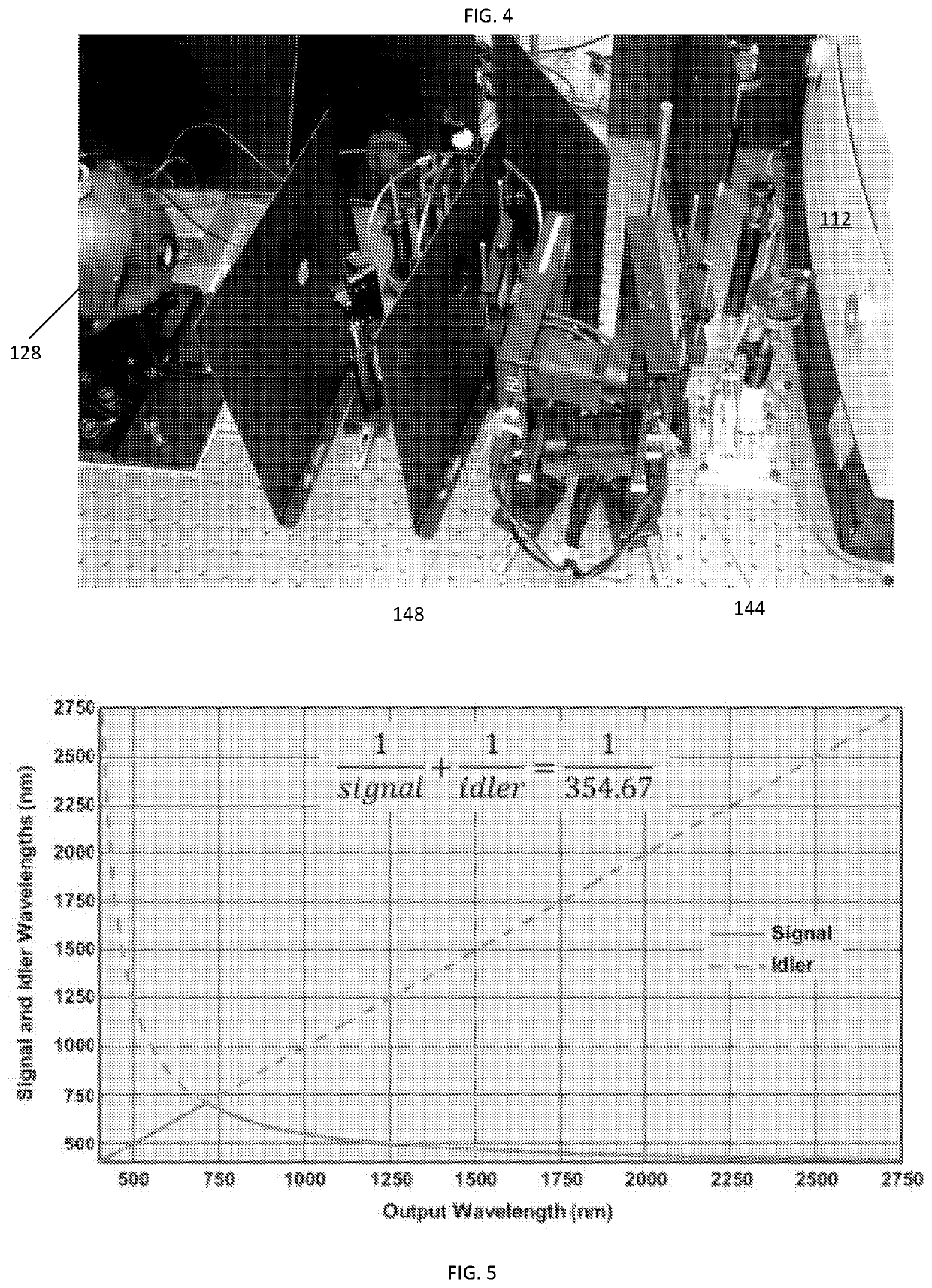Spectrophotometer System and Enhanced Optical Characterization of Biological Samples Using Same
- Summary
- Abstract
- Description
- Claims
- Application Information
AI Technical Summary
Benefits of technology
Problems solved by technology
Method used
Image
Examples
embodiment 100
[0058]An embodiment 100 of the spectrophotometer system (and interchangeably referred to as the MDISS system) is schematically shown in FIG. 1, while a high-level block diagram 200 of it is shown in FIG. 2. The useful radiation with the spectrum covering a broad span of wavelengths is generated in the MDISS system 100 in two primary sections: the narrow-spectral-band pump laser and the optical parametric oscillator (OPO), to which the pump laser is coupled.
[0059]In particular, the embodiment 100 of the MDISS employs a source of laser radiation (laser source). Such source can be configured as, for example, a combination of a pump source or injection seeder 104 with a continuous-wave (CW) laser 108. In one non-limiting implementation, the laser source may include as shown Nd-YAG laser equipped with a multiplicity of non-linear harmonic generating sub-systems to generate a laser output at, for example, 1064 nm, 532 nm, and 355 nm in a pulsed regime (for example, 250 mJ 4 ns pulses, wit...
embodiment 1700
[0121]FIG. 17 presents an exploded view of the embodiment 1700 high-pressure optical cell. A typical embodiment of the optical cell of the invention includes a 76.2 diameter by 7.67 mm thickness transparent ALON ceramic window plates, an appropriately dimensioned Teflon spacer 1410, and supporting gasket / covers housed on the micropolished, biocompatible stainless steel body (1510A, 1510B). A person of skill will readily recognize that the optical path (defined by the thickness of the inner volume) of a given cell may be judiciously adapted to provide for high-precision measurements of a given sample. For example—in comparison of two assembled high—pressure cell systems, one having a 1.1 mm optical-path-length cell system (˜3.48 mL inner volume) and another 50 mm path length (˜158.26 mL inner volume), the shorter path length cell is configured to be suitable for high-dispersion measurement of fluid samples such as blood. The cell with increased path length is required for measuremen...
PUM
 Login to view more
Login to view more Abstract
Description
Claims
Application Information
 Login to view more
Login to view more - R&D Engineer
- R&D Manager
- IP Professional
- Industry Leading Data Capabilities
- Powerful AI technology
- Patent DNA Extraction
Browse by: Latest US Patents, China's latest patents, Technical Efficacy Thesaurus, Application Domain, Technology Topic.
© 2024 PatSnap. All rights reserved.Legal|Privacy policy|Modern Slavery Act Transparency Statement|Sitemap



